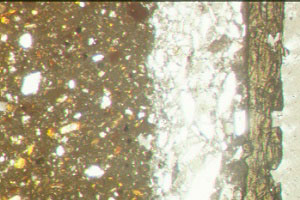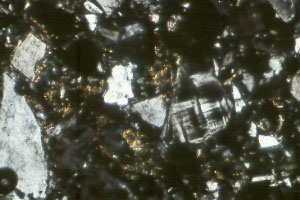Ceramic Petrology Facility
How to find out where your pot comes from
Petrographic analysis is a technique developed in the earth-sciences for microscopic observation of rocks and minerals (methodology). It enables identification of the rocks and minerals found within the pottery, and uses these attributes to characterize the physical properties of the pottery. These physical characteristics can then be used to do things like identify where the pottery was made, or at least say that the pottery was not where it was found.
This type of research has been undertaken on several areas of my research, particularly on ceramics from the Middle East of the 8th to 13th centuries AD (Lustre-ware Ceramics), and of the late 14th to early 16th centuries; pottery from Iran of the late 16th and 17th centuries ; from Yemen; and from ancient Mesopotamia (Tigris-Euphrates Ceramics). More recently the facilities have also been used for the study of stone artifacts from the Yemen and China, and of pottery from Central America, the Indus Valley, and the South Pacific.
This research has been funded in part by grants from the Social Sciences and Humanities Research Council of Canada and the Royal Ontario Museum

Thin-section of pottery from Samarra, central Iraq, image
about 1 mm across, with glaze to right, crushed quartz slip, and
clay body to left

Thin-section of Timurid pottery from Nishapur, northeast Iran, image about 1 mm
across, a stonepaste body which is mostly made of crushed
quartz, but in this case also includes feldspars
|